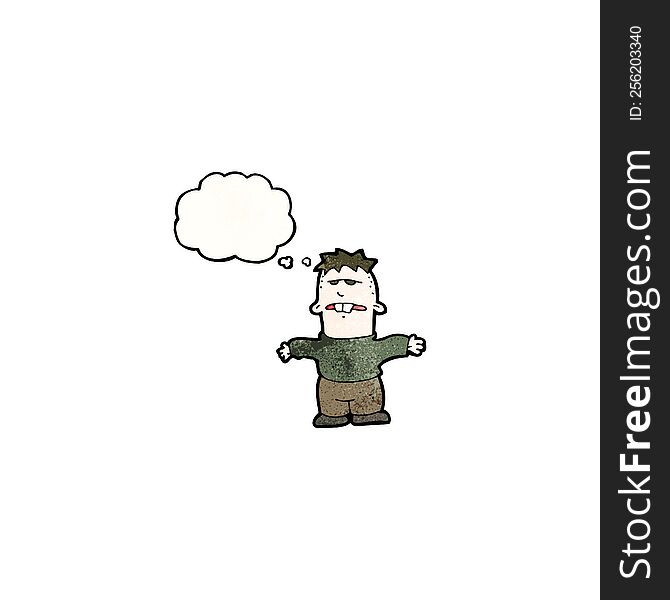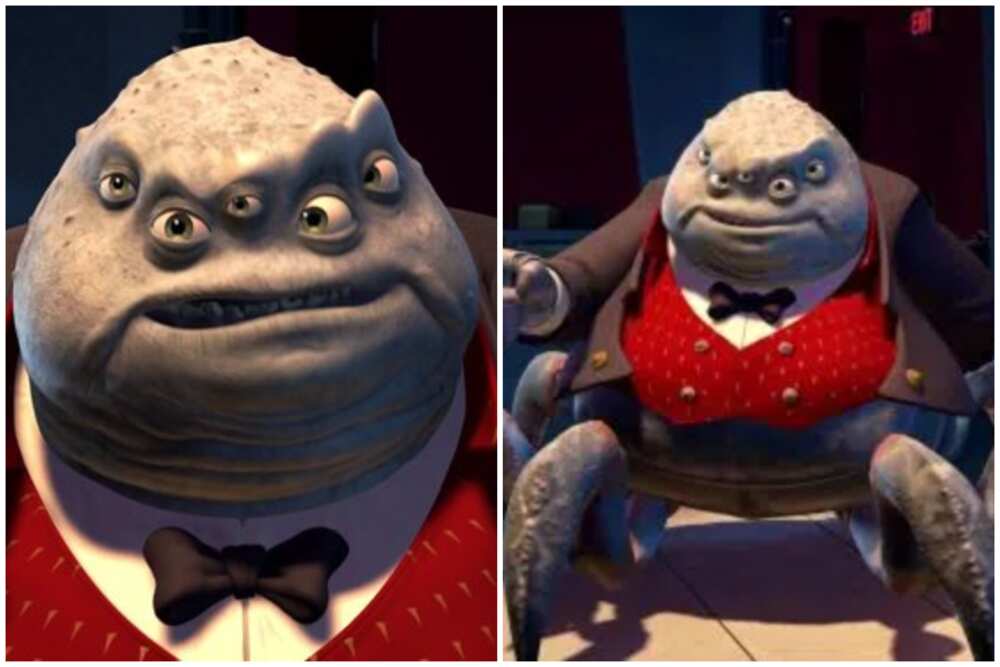Let’s talk about fat ugly cartoon, shall we? These quirky, exaggerated characters have been a staple in the world of animation for decades. From classic Saturday morning cartoons to modern animated series, they’ve captured our hearts with their unique charm and humor. But what makes them so special? Why do we find ourselves drawn to these exaggerated depictions of imperfection? Well, buckle up, because we’re diving deep into the world of these hilarious and iconic characters.
When you think about fat ugly cartoon, it’s easy to dismiss them as just another trope in the animation world. But there’s more to it than meets the eye. These characters often serve as a reflection of societal norms, breaking barriers and challenging stereotypes. They remind us that imperfection is not just okay—it’s what makes life interesting.
In this article, we’ll explore the history, cultural significance, and the role of fat ugly cartoon in shaping our understanding of diversity and representation. Whether you’re a die-hard fan or just curious about the phenomenon, there’s something here for everyone. So grab your favorite snack, and let’s get started!
Read also:N3on Age The Ultimate Guide To The Era Thats Redefining Modern Life
Here’s what we’ll cover:
- The History of Fat Ugly Cartoon
- Cultural Impact and Representation
- Psychology Behind Why We Love Them
- Famous Examples in Pop Culture
- Animation Techniques Used
- Controversies Surrounding Fat Ugly Cartoon
- The Future of Fat Ugly Cartoon
- Benefits of Embracing Imperfection in Animation
- Conclusion
- FAQ
The History of Fat Ugly Cartoon
Back in the day, cartoons were all about simplicity and fun. But as animation evolved, so did the characters. The concept of fat ugly cartoon isn’t new—it’s been around since the early days of animation. Think about it: characters like Wile E. Coyote, Homer Simpson, and even Shrek fall into this category. These characters were designed to be memorable, and they certainly succeeded.
But why did animators choose to exaggerate features like size and appearance? Well, it all boils down to one thing: humor. Exaggeration is a powerful tool in animation, allowing creators to push boundaries and create memorable scenes. Over the years, these characters have become cultural icons, sparking conversations about representation and diversity.
Early Days of Animation
Let’s rewind to the early 20th century when animation was still in its infancy. Cartoonists were experimenting with different styles, and one of the most popular techniques was exaggeration. Characters with oversized features, exaggerated expressions, and quirky personalities became the norm. Think about Popeye the Sailor or Betty Boop—these characters were designed to stand out, and they did just that.
Fast forward to the 1990s, and we see a resurgence of fat ugly cartoon in shows like “The Simpsons” and “South Park.” These shows embraced imperfection, using it as a tool to comment on society and challenge norms. It was a game-changer for the animation industry, proving that characters didn’t have to be perfect to be loved.
Cultural Impact and Representation
Now, let’s talk about the elephant in the room—representation. Fat ugly cartoon have played a significant role in shaping our understanding of diversity in media. While some argue that these characters perpetuate negative stereotypes, others believe they offer a platform for underrepresented groups to be seen and heard.
Read also:Arikytsya Real Name Revealed The Untold Story Behind The Sensation
Take, for example, the character of Shrek. He’s far from the traditional fairy tale hero, yet he became one of the most beloved characters in animation history. Shrek’s journey is a celebration of self-acceptance and embracing imperfection. It’s a message that resonates with audiences of all ages, proving that representation matters.
Breaking Stereotypes
One of the biggest criticisms of fat ugly cartoon is that they reinforce negative stereotypes. However, many creators are using these characters to challenge those very stereotypes. By giving them complex personalities, relatable storylines, and meaningful arcs, animators are redefining what it means to be a cartoon character.
For instance, characters like Garfield or Patrick Star aren’t just sidekicks—they’re fully realized individuals with their own quirks and flaws. This shift in representation has opened the door for more diverse and inclusive storytelling in animation.
Psychology Behind Why We Love Them
So, why do we love fat ugly cartoon so much? It’s not just about the humor—there’s a psychological reason behind it. Humans are naturally drawn to imperfection because it makes us feel connected. We see ourselves in these characters, flaws and all. It’s comforting to know that we’re not alone in our imperfections.
Moreover, these characters often serve as a form of escapism. They allow us to laugh at our own shortcomings and find joy in the absurdity of life. It’s no wonder that shows featuring fat ugly cartoon have such a dedicated fanbase—they tap into something primal and universal.
Humor as a Coping Mechanism
Let’s be real—life can be tough. Sometimes, we need a good laugh to get through the day, and fat ugly cartoon deliver just that. Their exaggerated features and quirky personalities provide a much-needed break from reality. It’s a reminder that even in the face of adversity, we can find humor and joy.
Studies have shown that laughter has numerous health benefits, from reducing stress to boosting immunity. So, the next time you’re watching your favorite fat ugly cartoon, remember that you’re not just entertaining yourself—you’re also improving your well-being.
Famous Examples in Pop Culture
Let’s take a look at some of the most iconic fat ugly cartoon in pop culture. From classic characters to modern favorites, these individuals have left an indelible mark on the animation world. Here are a few examples:
- Homer Simpson – The quintessential fat ugly cartoon, Homer has become a cultural icon thanks to his loveable personality and hilarious antics.
- Shrek – A modern fairy tale hero who proves that beauty comes in all shapes and sizes.
- Garfield – The lazy, lasagna-loving cat who captured the hearts of millions with his sarcastic humor.
- Patrick Star – SpongeBob’s lovable sidekick, known for his innocence and quirky behavior.
These characters have transcended their screen time, becoming part of our daily lives through merchandise, memes, and even social media trends. It’s a testament to their enduring popularity and cultural significance.
Animation Techniques Used
Creating a fat ugly cartoon isn’t as simple as it seems. It requires a combination of technical skill and creative vision. Animators use various techniques to bring these characters to life, ensuring they’re both visually appealing and emotionally engaging.
One of the most important techniques is exaggeration. By amplifying certain features, animators can create a character that’s instantly recognizable. For example, Homer Simpson’s large head and droopy eyes make him instantly identifiable. Similarly, Shrek’s green skin and oversized ears set him apart from traditional fairy tale heroes.
Color Palette and Design
Color plays a crucial role in character design. Fat ugly cartoon often feature bold, vibrant colors that make them stand out. Think about the bright orange of Garfield or the green hue of Shrek. These colors not only define the character but also convey their personality and emotions.
Design is equally important. A well-designed character should be easy to recognize, even from a distance. This is why many fat ugly cartoon have simplified features, making them instantly recognizable to viewers of all ages.
Controversies Surrounding Fat Ugly Cartoon
Of course, not everyone is a fan of fat ugly cartoon. Some critics argue that these characters perpetuate negative stereotypes and reinforce harmful societal norms. While there’s some truth to this, it’s important to recognize that not all fat ugly cartoon are created equal.
For every character that reinforces stereotypes, there’s another that challenges them. It’s all about intentionality. When creators take the time to develop complex, multidimensional characters, they can avoid falling into the trap of reinforcing harmful tropes.
The Importance of Representation
Representation matters, and fat ugly cartoon have the power to shape how we view ourselves and others. By embracing imperfection, these characters offer a more inclusive view of the world. It’s a reminder that beauty comes in all shapes and sizes, and that’s something worth celebrating.
The Future of Fat Ugly Cartoon
As animation continues to evolve, so will the role of fat ugly cartoon. We’re already seeing a shift towards more inclusive and diverse representation in media, and this trend is likely to continue. Creators are increasingly using these characters to tell stories that reflect the complexities of modern life.
With advancements in technology, animators have more tools than ever to bring their visions to life. From 3D animation to virtual reality, the possibilities are endless. Who knows? Maybe one day, we’ll see fat ugly cartoon in a whole new light—literally and figuratively.
Benefits of Embracing Imperfection in Animation
There are countless benefits to embracing imperfection in animation. For starters, it promotes diversity and inclusion, offering a platform for underrepresented groups to be seen and heard. It also fosters creativity, encouraging animators to think outside the box and push boundaries.
Moreover, fat ugly cartoon have the power to inspire empathy and understanding. By portraying characters with flaws and imperfections, creators can help viewers see the humanity in everyone. It’s a powerful message that resonates across cultures and generations.
Encouraging Self-Acceptance
One of the most significant benefits of fat ugly cartoon is their ability to promote self-acceptance. Characters like Shrek and Homer Simpson remind us that it’s okay to be different. They teach us that imperfection is not something to be ashamed of—it’s what makes us unique.
For young viewers, this message can be life-changing. It encourages them to embrace their own quirks and flaws, fostering a sense of self-worth and confidence. In a world that often values perfection, these characters offer a much-needed reminder that being yourself is the best thing you can do.
Conclusion
In conclusion, fat ugly cartoon have played a significant role in shaping the world of animation. From their humble beginnings in early 20th-century cartoons to their current status as cultural icons, these characters have captured our hearts with their unique charm and humor. While they’re not without controversy, they offer a platform for important conversations about representation and diversity.
As animation continues to evolve, the role of fat ugly cartoon will undoubtedly change. But one thing is certain—they’ll always hold a special place in our hearts. So, the next time you’re watching your favorite cartoon, take a moment to appreciate the beauty of imperfection. It’s what makes life—and animation—so interesting.
Now, it’s your turn! What’s your favorite fat ugly cartoon? Let us know in the comments below, and don’t forget to share this article with your friends. Together, let’s celebrate the power of imperfection in animation!
FAQ
Q: Are fat ugly cartoon perpetuating negative stereotypes?
A: It depends on the character and the intention behind their creation. While some characters may reinforce harmful tropes, others challenge them by offering complex, multidimensional portrayals.
Q: Why are fat ugly cartoon so popular?
A: They tap into our natural attraction to imperfection, offering a sense of connection and relatability. Plus, they’re just plain funny!
Q: What’s the future of fat ugly cartoon?
A: As animation continues to evolve, we’ll likely see more diverse and inclusive portrayals of fat ugly cartoon, reflecting the complexities of modern life.


